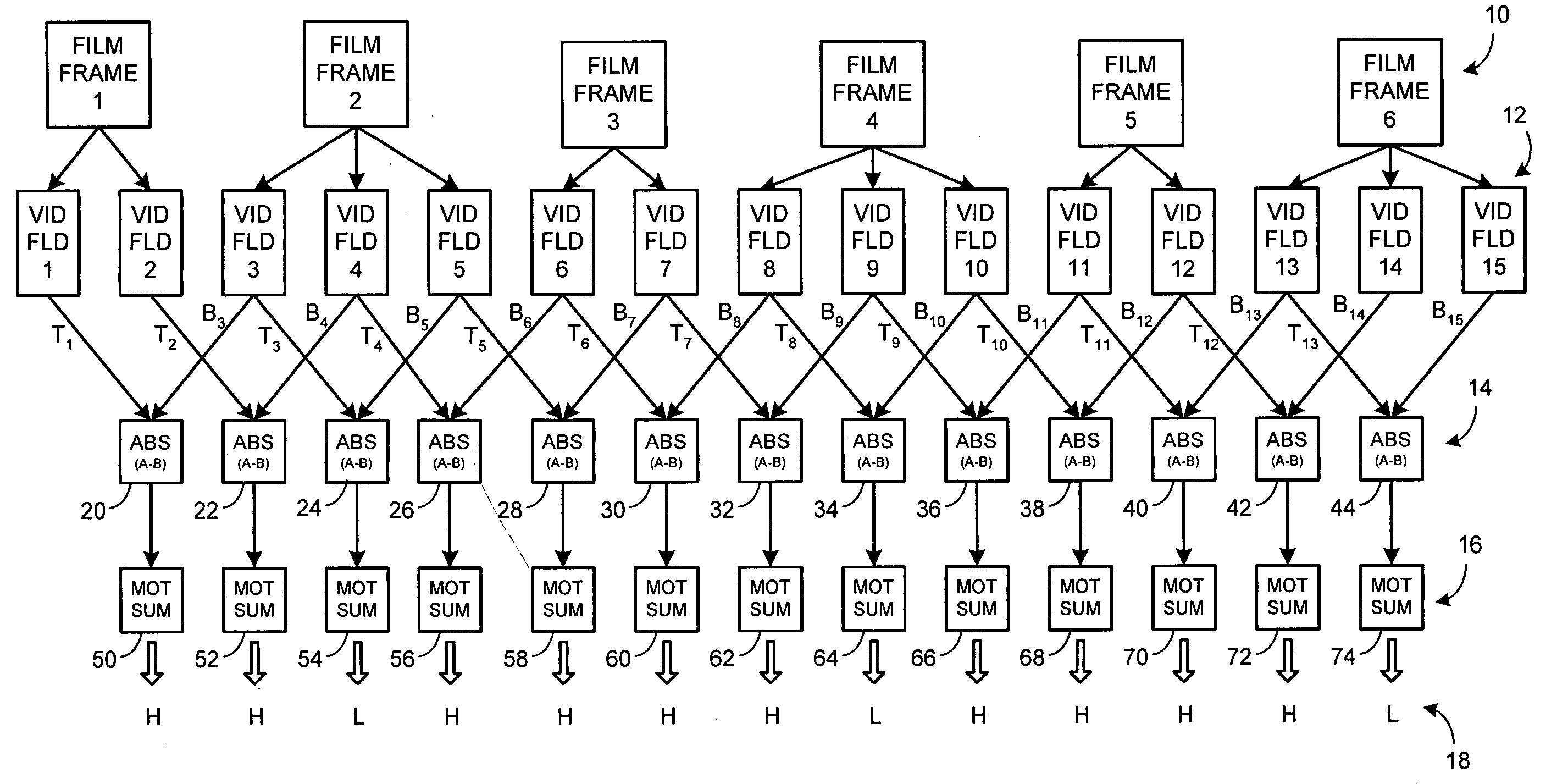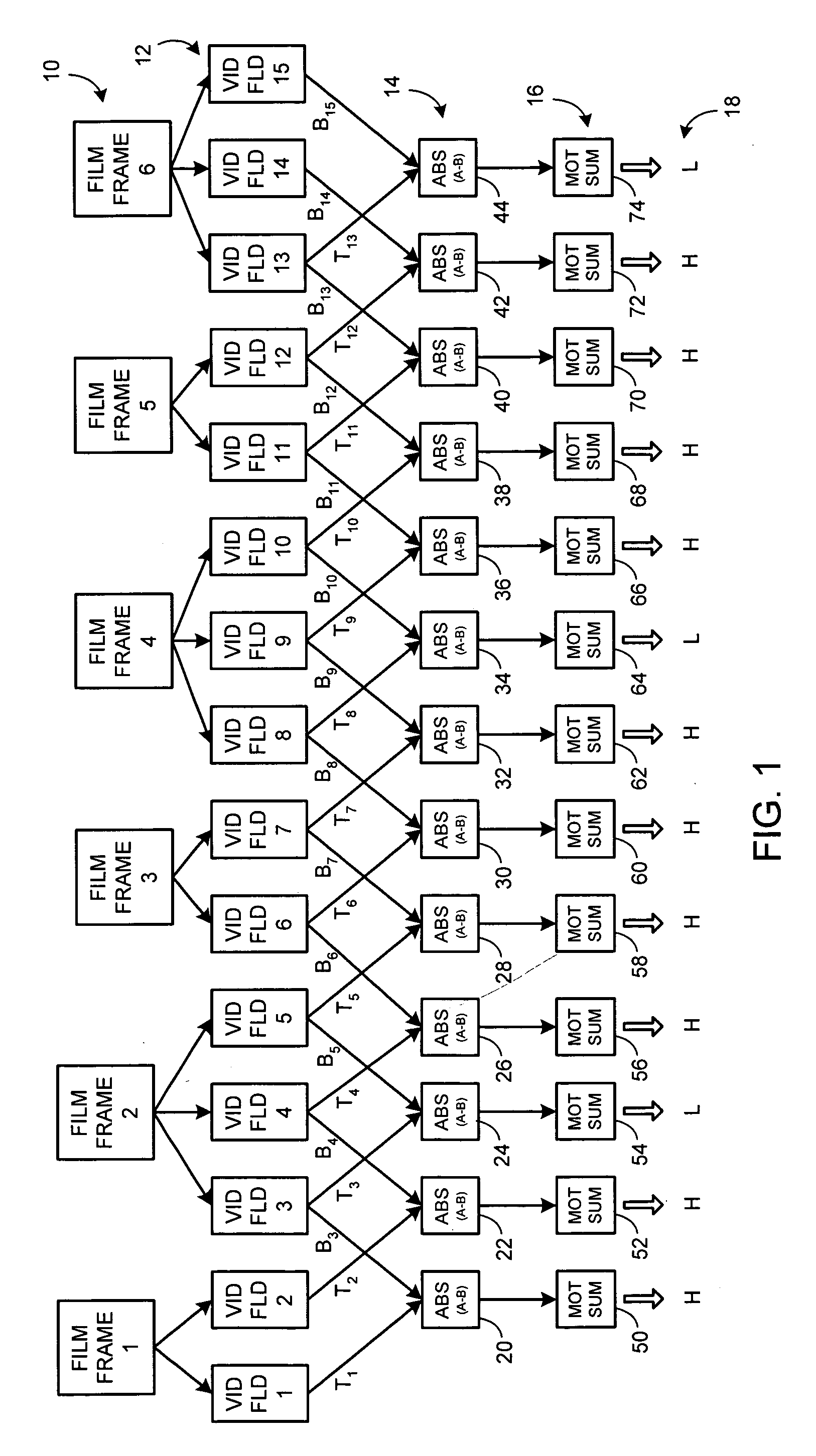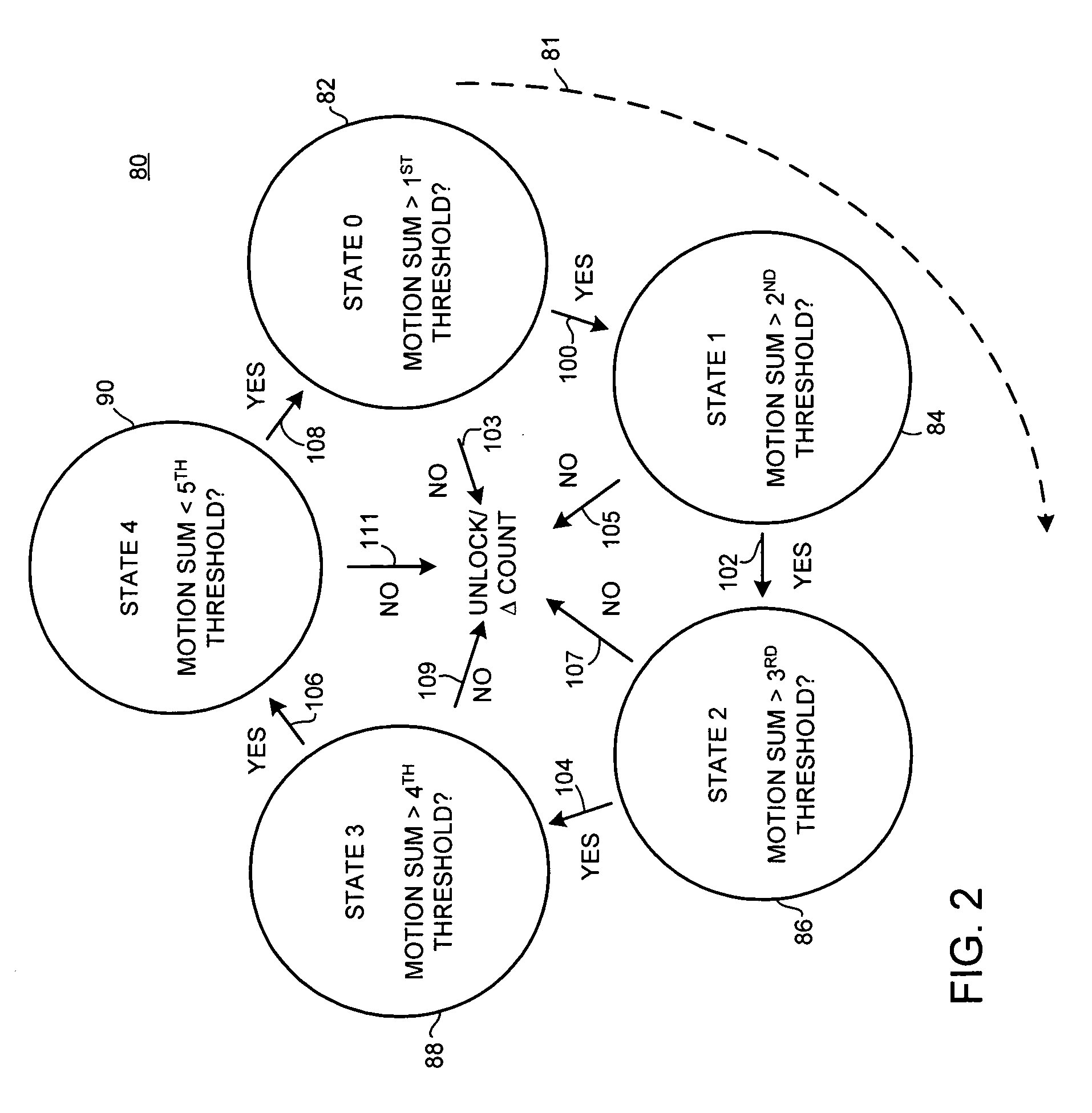Method and apparatus for treating a video signal
a video signal and video technology, applied in the field of video signals, can solve the problems of video signals that have originated partly from film and partly from video, image from frame to frame no longer complement each other, and still a problem, and achieve the effect of reliably indicating when and reliably detecting the cessation of the 3:2 pull-down treatmen
- Summary
- Abstract
- Description
- Claims
- Application Information
AI Technical Summary
Benefits of technology
Problems solved by technology
Method used
Image
Examples
Embodiment Construction
[0019]FIG. 1 is a schematic diagram illustrating the process of 3:2 pull-down conversion of motion picture film images to a video format. In FIG. 1, a first row 10 of frames contains a consecutively occurring series of film frames: Film Frame 1, Film Frame 2, Film Frame 3, Film Frame 4, Film Frame 5, Film Frame 6. Of course, more film frames may follow Film Frame 6, but in order to simplify FIG. 1, only six film frames are illustrated. Film Frames 1-6 are recorded and are presented for display at a speed of 24 frames per second.
[0020]As mentioned earlier herein, video signals may be recorded at a speed of 60 fields per second. A process known in the industry as 3:2 pull-down is employed to convert film recordings for compatible display with video equipment. Accordingly, in FIG. 1 a stream of video fields (VID FLD) is illustrated in a second row 12: VID FLD1 through VID FLD 15. Of course, more video fields may follow VID FLD 15, but in order to simplify FIG. 1, only fifteen video fie...
PUM
 Login to View More
Login to View More Abstract
Description
Claims
Application Information
 Login to View More
Login to View More - R&D
- Intellectual Property
- Life Sciences
- Materials
- Tech Scout
- Unparalleled Data Quality
- Higher Quality Content
- 60% Fewer Hallucinations
Browse by: Latest US Patents, China's latest patents, Technical Efficacy Thesaurus, Application Domain, Technology Topic, Popular Technical Reports.
© 2025 PatSnap. All rights reserved.Legal|Privacy policy|Modern Slavery Act Transparency Statement|Sitemap|About US| Contact US: help@patsnap.com



